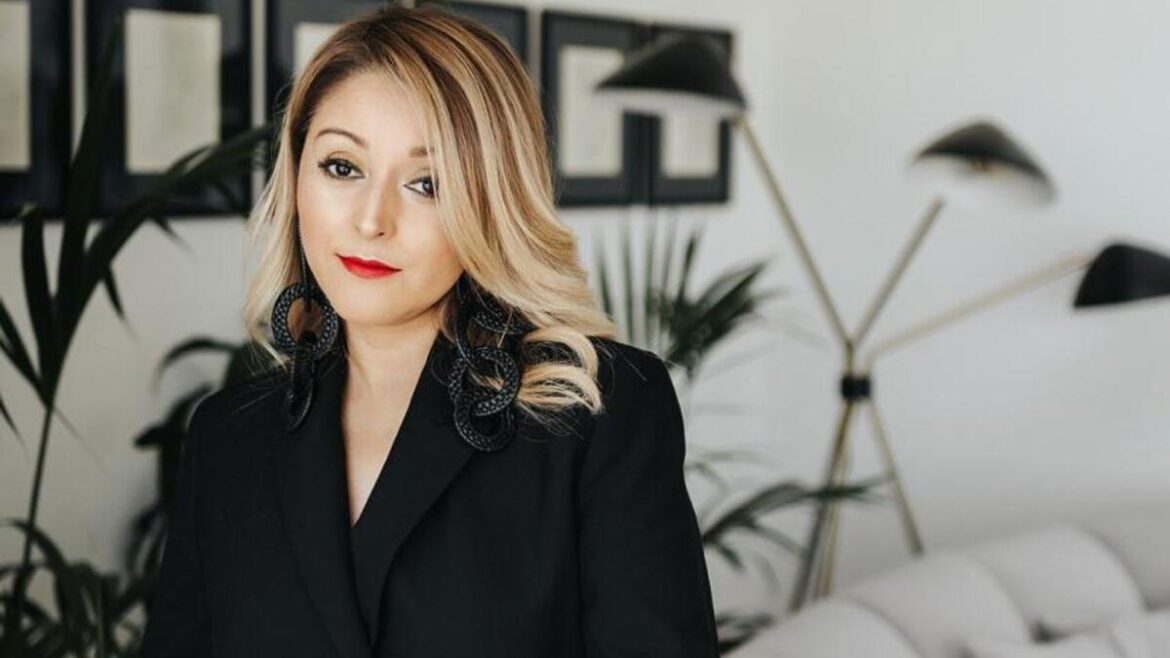By EntertainmeThe MIA Art Collection recently unveiled its groundbreaking exhibition, “LAVINIA: In the Footsteps of a Female Italian Iconic Artist,” at the prestigious DIFC Dubai. Alejandra Castro Rioseco, the visionary Founder and Executive Director of MIA Art Collection, spearheaded this initiative. In a chat with City Times, Alejandra delved into the inspiration behind the project, the collaboration with DIFC Dubai, and the profound significance of showcasing the works of Lavinia Fontana and four contemporary Italian female artists.
The exhibition is not merely a display of artistic prowess, she says, but a powerful narrative woven with historical, political, and gender equity themes. Alejandra, alongside international curator Matteo Sormani, meticulously shaped the exhibition to shed light on Lavinia Fontana’s remarkable contributions to art history and her enduring influence on female artists. She further reflects on the vibrant art scene in the UAE, praising the country’s unwavering support for artists of all backgrounds and expressions, highlighting the UAE’s commitment to nurturing cultural growth as foundational to its progress and prosperity, echoing the sentiment that a culturally rich nation is a stronger and more resilient one. Here are the edited excerpts:
As the director of the exhibition “LAVINIA: In the Footsteps of a Female Italian Iconic Artist,” could you share with us the inspiration behind this project and what attendees can expect to experience?
The inspiration behind this MIA Art Collection exhibition is based on the original idea of showing a historical piece of an iconic woman that has never been seen in the Emirates and displaying it in a public space, such as DIFC, which carriers several messages to viewers; first, imagine a piece that has travelled from Italy to Dubai, a piece with almost 500 years of age, which for someone who knows something about art is very important, and even more so considering it is displayed in a public place, which in itself speaks of the evolution of art, perhaps of a beginning of new museums and the end of the traditional model; so many things you can see and experience by visiting this exhibition.
How did the collaboration between MIA Art Collection and DIFC Dubai come about for this exhibition? What made The Gate at DIFC the ideal venue to showcase these artworks?
It was very easy because DIFC understands the value of art very well and understood the work of MIA Art Collection very quickly. They have a beautiful art collection and carry out permanent art projects, so it is very easy to talk to a partner who understands this.
The first thing is that they know about art, they are executive, impeccable people. And they have the most beautiful and safest place in Dubai.
Imagine the weight of having a piece like this publicly displayed, such a sign of its security and rigour in their work of offering the safest area of Dubai. We worked together as a real team, DIFC has an exceptional team with a very amazing mix of talents from different countries. It has been a beautiful experience because in MIA Art Collection we are mostly women and so is the DIFC team.
What was the role of the international curators in shaping the narrative of the exhibition?
It was the key to carrying out this exhibition. I personally spend a lot of time planning the strategy for a successful exhibition. We choose each actor like a game of chess. This is not by chance… it is not an exhibition of women artists, it is a combination of history, politics and seeking equity.
Matteo travelled especially from Italy, he is from Bologna, the city of Lavinia, he knows it like the back of his hand and knows the value that it has and will have in history in the future. He was the man for this exhibition. I knew it when we met in Rimini and a year later we met in Milan to refine the details and that’s it…
Alejandra at the Lavinia exhibition in DIFC
Lavinia Fontana is undoubtedly a fascinating figure in art history. What drew you to centre the exhibition around her and her works? How do you think her contributions have influenced the art world, especially for female artists?
Her life, achievements as a professional, persistence and the value she added to the world of art, beyond being a painter, she determined the role of women in the world of art, she was considered the first professional woman in the world of art. Imagine how powerful that is.
I think that still little is known about her as is the case with many great female artists, the history is being revealed and little by little it is appearing. Lavinia is an artist that every artist should study both for her influence on ‘Mannerism’ and for her achievements in Italy in a time dominated by men.
The exhibition exclusively features works by women artists, including four young Italian artists from the MIA Art Collection. Can you discuss the significance of highlighting female artistic voices in this exhibition, especially within the context of historical under-representation?
The four artists that make up this exhibition are related to Lavinia as if with an invisible thread, they all have something of her in their history, in their trajectory, their origin. The fact of mixing four young artists with a teacher like Lavinia raises the standard of these artists, improves their resume and puts them on another level, which is what MIA Art Collection finally seeks to do – make female artists visible.
Artworks at the exhibition in DIFC
Your mission to promote the visibility of women artists is commendable. How do you hope this exhibition will contribute to raising awareness about the importance of recognising and celebrating the contributions of women artists throughout history and in contemporary art?
I have always learned that actions show more than words, we can talk about equality or what each person contemplates or thinks about it, but the simple fact is that equality is something that must exist to improve and heal a society that is quite sick.
Equal opportunity in the world of art is a small part and it is a small collaboration for a much larger cause that is the “understanding”. The understanding that being different does not make others better or superior, just different, and when there is equal opportunity, something as wonderful as this exhibition happens, something so thoughtful and beautiful… something that everyone who has seen it will remember.
Lastly, what are your thoughts on the art scene in the UAE?
I think that everyone who lives in the UAE is tremendously lucky, there are opportunities for all artists, for all artistic expressions, it is very surprising especially when you think about what is happening in the world, the complication that many artists face to exhibit.
This is a country that has art in its soul, that does not judge any artist and that gives everyone the opportunity to shine, to the super talented and the not so talented… I hope that artists realise this and value what the Government of the Emirates does for them and for improving the culture, because at the end of the day, a more educated, cultured country with more opportunities is a better country; culture is the basis of great empires.


